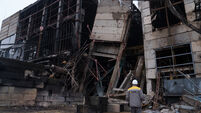US voters entangled in voting machine problems
Programming errors and inexperience dealing with electronic voting machines frustrated poll workers in hundreds of precincts in today’s US elections, delaying voters in several states and forcing some to use paper ballots instead.
In Cleveland, voters rolled their eyes as election workers fumbled with new touchscreen machines that they could not get to start properly until about 10 minutes after polls opened.














